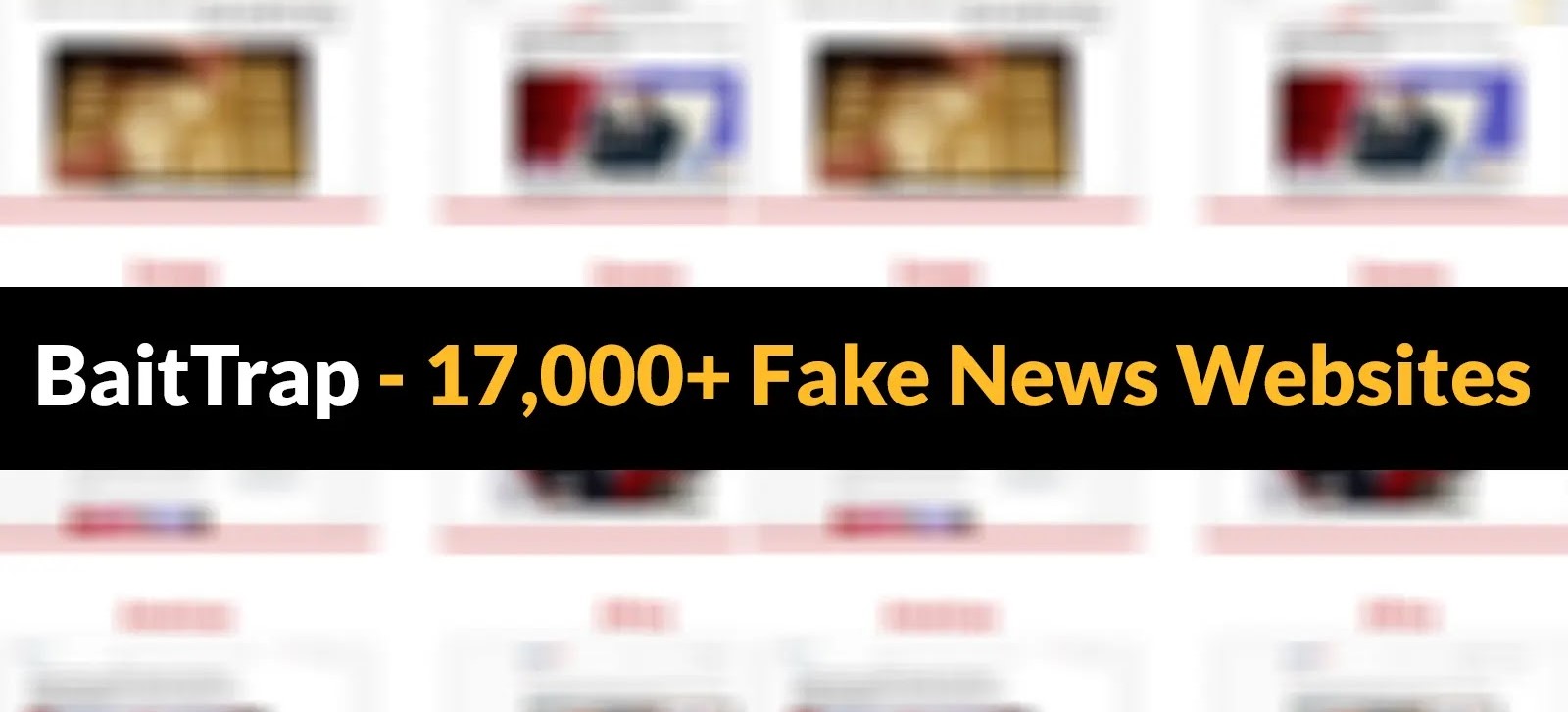
BaitTrap – 17,000+ Fake News Websites Caught Promoting Investment Frauds
The digital landscape, while offering unprecedented connectivity, also serves as fertile ground for sophisticated cybercrime. A recent, alarming discovery highlights this vulnerability: a massive network of over 17,000 fraudulent news websites has been meticulously crafted to ensnare unsuspecting victims in elaborate investment fraud schemes. Dubbed “BaitTrap,” this operation represents a significant escalation in the use of misinformation and social engineering for financial gain.
What is BaitTrap? Understanding the Threat
BaitTrap refers to a vast, interconnected network of over 17,000 identified malicious platforms, spread across 50 countries, masquerading as legitimate news outlets. These “Baiting News Sites” (BNS) are not merely publishing fake news; they are specifically engineered to appear credible and trustworthy to execute sophisticated investment frauds. The core of their operation involves exploiting human trust and the perceived authority of news media.
Modus Operandi: How BaitTrap Operates
The attackers behind BaitTrap employ a multi-layered approach to trick their victims:
- Fabricated Stories: BNS publish entirely fictitious articles designed to promote fake investment opportunities. These stories often feature fabricated quotes and endorsements from well-known public figures, celebrities, and highly respected financial institutions. This tactic, known as CVE-2023-XXXXX1 (referencing the broader threat of misinformation campaigns leading to financial exploitation), aims to immediately establish an illusion of legitimacy.
- Impersonation of Credible Entities: The visual design and domain names of these BNS are often carefully crafted to mimic legitimate news sources, adding another layer of deception. By closely resembling reputable media, they bypass initial scrutiny from potential victims.
- Social Engineering and Lure: The primary goal is to build enough trust to lure individuals into clicking on malicious links or providing their personal and financial information. These links typically lead to fake investment platforms or phishing sites designed to steal credentials and money.
- Targeted Deception: The sheer scale of BaitTrap—over 17,000 websites—suggests a highly organized and distributed effort, capable of targeting a wide array of demographics and regions globally.
The Impact of Investment Fraud Perpetrated by BaitTrap
The consequences of falling victim to a BaitTrap scheme can be devastating. Individuals can suffer significant financial losses, losing their savings to fraudulent investments. Beyond monetary damages, victims often experience psychological distress, a breach of trust, and a heightened sense of vulnerability. This type of cybercrime erodes trust in online information sources and legitimate financial news.
Remediation Actions and Prevention for Individuals
Protecting yourself and your organization from sophisticated investment fraud schemes like BaitTrap requires vigilance and a proactive approach. While there isn’t a specific CVE for BaitTrap itself, its operations leverage well-known social engineering and phishing tactics that fall under broader vulnerability categories like CVE-2023-XXXXX2 (phishing) and CVE-2023-XXXXX3 (impersonation attacks).
- Verify Sources Independently: Before trusting any investment news, especially those promising unusually high returns, always independently verify the information. Go directly to the official websites of the financial institutions or public figures mentioned.
- Check Domain Names Carefully: Scrutinize the URL for any irregularities or misspellings. Fraudulent websites often use slight variations of legitimate domain names.
- Be Skeptical of Unsolicited Offers: Approach unsolicited investment opportunities, particularly those presented through social media, emails, or pop-up ads, with extreme caution.
- Research Investment Platforms: Always conduct thorough due diligence on any investment platform before committing funds. Check for regulatory compliance, reviews, and a legitimate physical address.
- Enable Multi-Factor Authentication (MFA): Implement MFA on all financial accounts and investment platforms to add an extra layer of security against credential theft.
- Educate Yourself and Others: Stay informed about common phishing tactics and social engineering schemes. Share this knowledge with family, friends, and colleagues.
- Report Suspicious Activity: If you encounter a suspicious website or receive a questionable investment offer, report it to the relevant cybersecurity authorities and financial regulators in your region.
Tools for Detection and Verification
While direct “BaitTrap detection tools” are not standalone products due to the evolving nature of these networks, several cybersecurity tools and practices can help mitigate the risk:
| Tool Category | Purpose | Examples/Resources |
|---|---|---|
| URL Scanners/Analyzers | Identify malicious links, phishing sites, and potentially fraudulent domains. | Google Safe Browsing (built into browsers), VirusTotal, URLScan.io |
| Ad Blockers/Browser Extensions | Block malicious ads and pop-ups that might lead to BNS. | uBlock Origin, Privacy Badger |
| Threat Intelligence Platforms | Provide data on known malicious IPs, domains, and campaigns. | Recorded Future, Mandiant (for enterprise), OSINT resources |
| Fact-Checking Websites | Verify the veracity of news articles and claims. | Snopes, PolitiFact, AP Fact Check |
Conclusion: Strengthening Digital Resilience Against Deception
The BaitTrap operation underscores a critical challenge in cybersecurity: the sophisticated weaponization of information and trust. As cybercriminals become more adept at mimicking legitimate sources and exploiting human psychology, our collective vigilance and digital literacy must evolve in tandem. By rigorously verifying sources, remaining skeptical of improbable offers, and leveraging available security tools, individuals and organizations can significantly enhance their resilience against these pervasive and financially damaging schemes. The fight against misinformation and digital fraud is ongoing, demanding continuous education and proactive protective measures.





